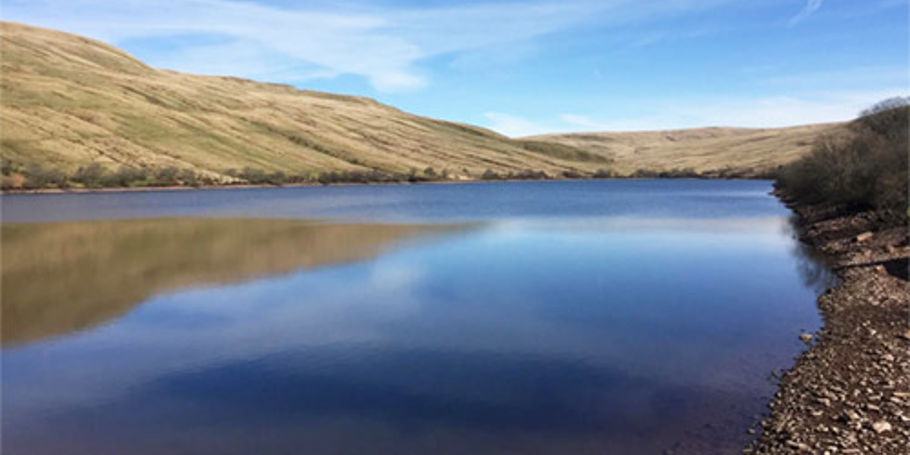Restoring flood defences, enhancing biodiversity and managing coastal risk in Wales
Porthcawl Sandy Bay Coastal Scheme
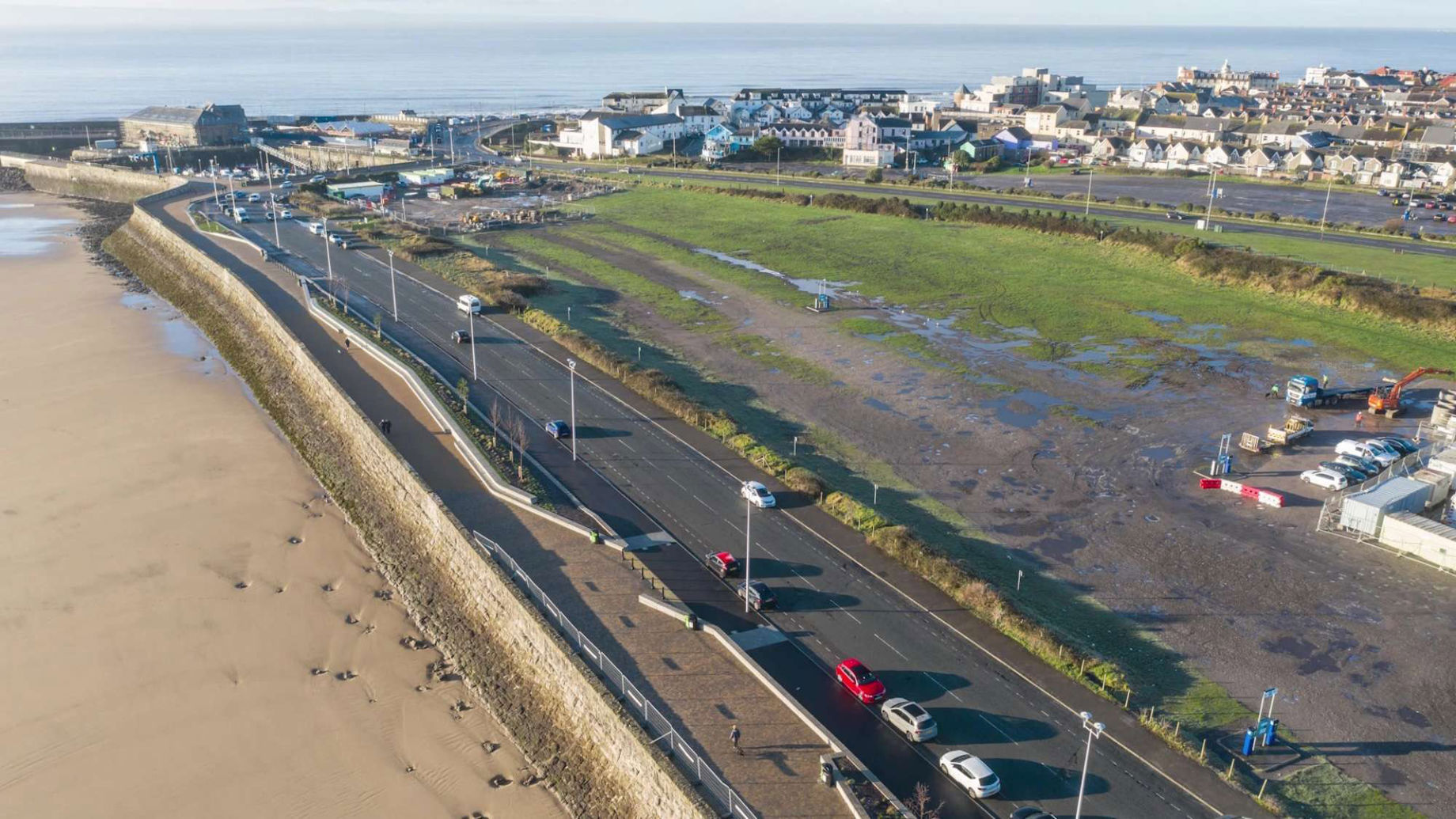
Porthcawl in South Wales boasts a rich maritime heritage and attracts 1.1m visitors a year. The seaside location is a draw for visitors and residents, but rising sea levels and increasing storm intensity coupled with the town’s ageing infrastructure, have increased the risk of coastal flooding. As well as threatening properties, this has constrained development opportunities in the area.
Building a business case for investment
Bridgend County Borough Council (BCBC) commissioned Arup to develop a business case for investment to reduce coastal flood risk to Sandy Bay, a wide and popular beach in Porthcawl. Our analysis revealed that the condition of Porthcawl’s historic Western Breakwater was key to managing coastal risk throughout the bay. As a result, we agreed with the funder, the Welsh Government, to include the structure in the project.
The bay is surrounded by more than 100-acres of land identified for regionally significant regeneration. We developed a phased approach to the scheme so that works within the council’s control could be funded without the delay and risk of awaiting future development.
Where previous proposals would have seen sand dune habitat replaced with concrete terraced defences, our study into coastal processes demonstrated that these could be preserved and restored. Our designs sensitively restore and enhance historic coastal structures to minimise cost and carbon, while employing placemaking to enhance the promenade amenity for visitors and residents alike. Our sensitive technical approach also adds longevity to Porthcawl’s future climate resilience.
This project forms a vital part of the infrastructure for defending the town against flooding and key stakeholders who continue to live, work, visit and invest in the area will be reassured by the quality of the upgrade.
Cllr John Spanswick
Cabinet Member for Climate Change and the Environment, Bridgend County Borough Council
Identifying key vulnerabilities
Sandy Bay has four connected but distinct frontages – Western Breakwater, Eastern Promenade, relict sand dunes, and Rhych Point headland. We applied wave modelling from specialist subconsultant ABPmer to our flood model, and this found that if the Western Breakwater were to fail, some 530 homes and 175 businesses would be at risk of coastal flooding. Understanding the relative costs and benefits of repairing this key asset helped the council fund the project by increasing Welsh Government grant eligibility by £1.2m.
Restoring historic flood defences and enhancing biodiversity
For almost 200 years, Porthcawl’s Western Breakwater has protected the town from extreme weather events. The grade-II listed structure forms a crucial part of Porthcawl’s coastal defences, but a challenging programme of repairs and strengthening measures was needed to maintain its structural integrity. We consulted with the council’s specialists and Welsh Government’s historic environment service, Cadw, to safeguard the listed structure’s heritage value. Early engagement with contractors Knights Brown ensured that our designs could be effectively and safely constructed during low-tide windows and in difficult coastal working conditions.
Our team conducted extensive research to understand the breakwater’s history and previous failures. Combining this information with drone, lidar, geophysical and geotechnical survey data enabled us to understand the structure’s existing weaknesses. We developed a design to reduce the risk of voids and impact of waves, targeting interventions where most needed. We used stone sourced from the original local quarry to replace a failed seaward-sloping wall, grouted voids and constructed a cut-off wall to reduce the risk of future voids forming. To strengthen the slender parapet without damaging the historic masonry, we added Cintec reinforcement – a system combining steel anchors with grout contained in a fabric sock mesh. Our approach minimised the cost and carbon impact of the project, as well as conserving the original character of the listed breakwater.
To support marine biodiversity, we partnered with CubeX and Swansea University to trial innovative modular textured panels to form an artificial reef and rockpools. Some panels were constructed with concrete mixtures incorporating local crushed cockle shells and ash to replicate the natural environment and encourage marine life such as honeycomb worm reefs.
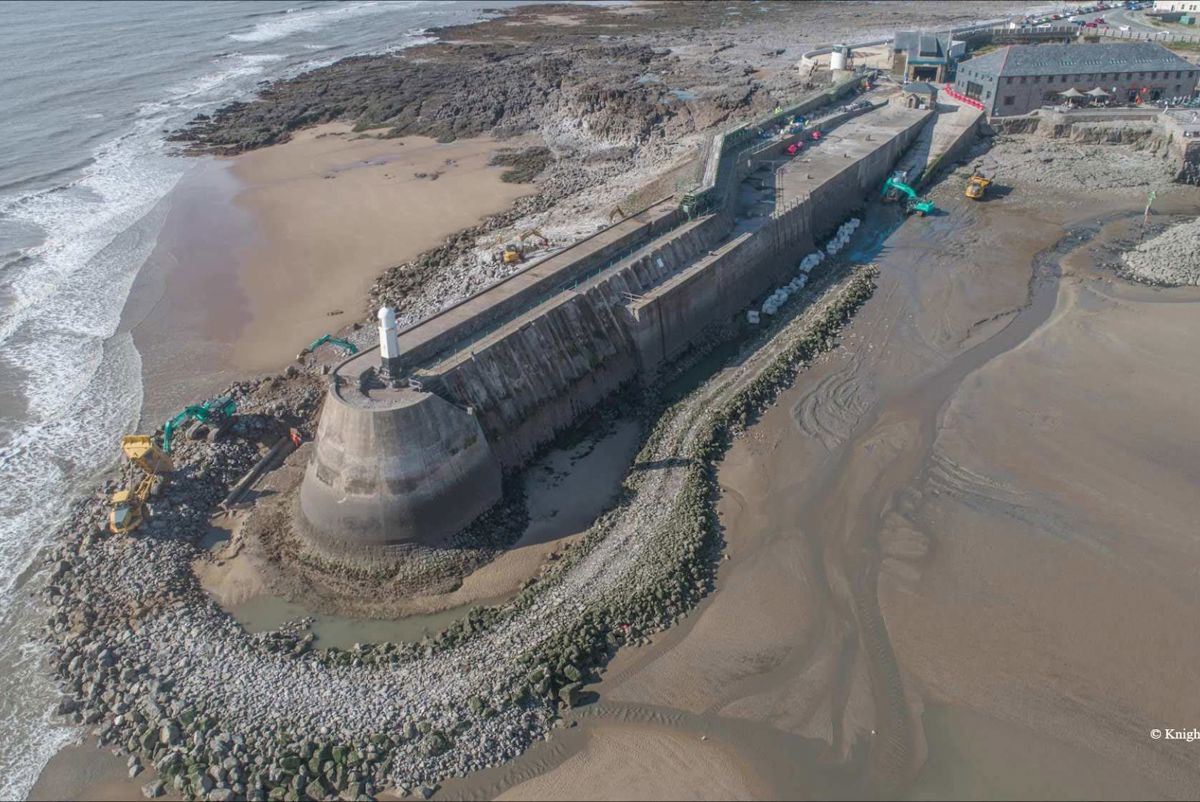
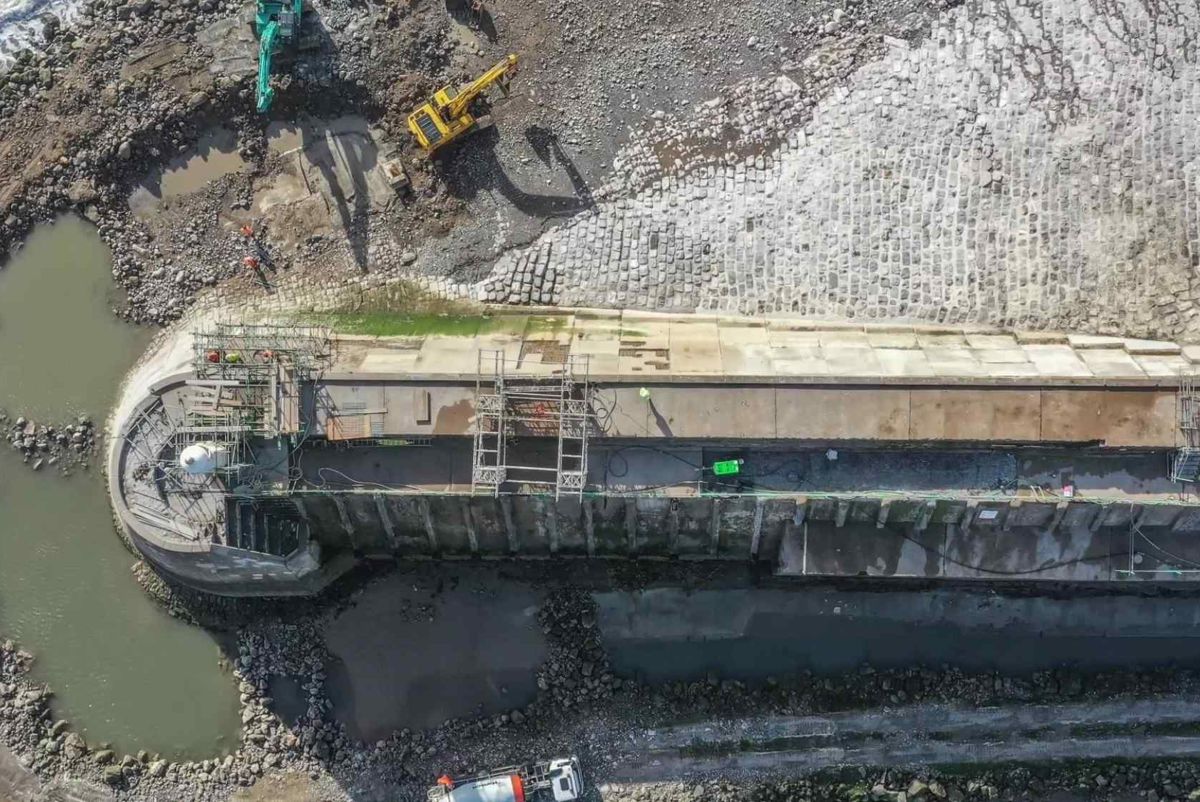
Combining flood protection with amenity benefits
Along the Eastern Promenade, repairs, parapet raising and strengthening were needed. A secondary wall to contain waves overtopping the promenade was originally planned but, as we refined our design, overtopping analysis showed that the wall could be replaced with multifunctional planters. These offered the amenities of green space and integrated terraced seating, while minimising service diversions which would have impacted programme cost and disruption. Along with improved cycling and walking routes, our additions make this part of the promenade a more functional and enjoyable space for visitors and locals to use.
Preserving natural dune habitats
The protection achieved by restoring and improving the breakwater meant we could take a regenerative approach to the bay’s relict sand dunes. Instead of carbon-intensive and expensive concrete structures, we opted for low-impact interventions to restore and enhance existing dune habitats. 285m of low-level fencing was installed to encourage the build-up of new dunes. Combined with a growth and stability monitoring plan, these simple measures help maintain the coastal pathway in this part of the bay and complement the council’s Dunes2Dunes programme, encouraging sustainable management of the coastal landscape and connecting important dune ecosystems.
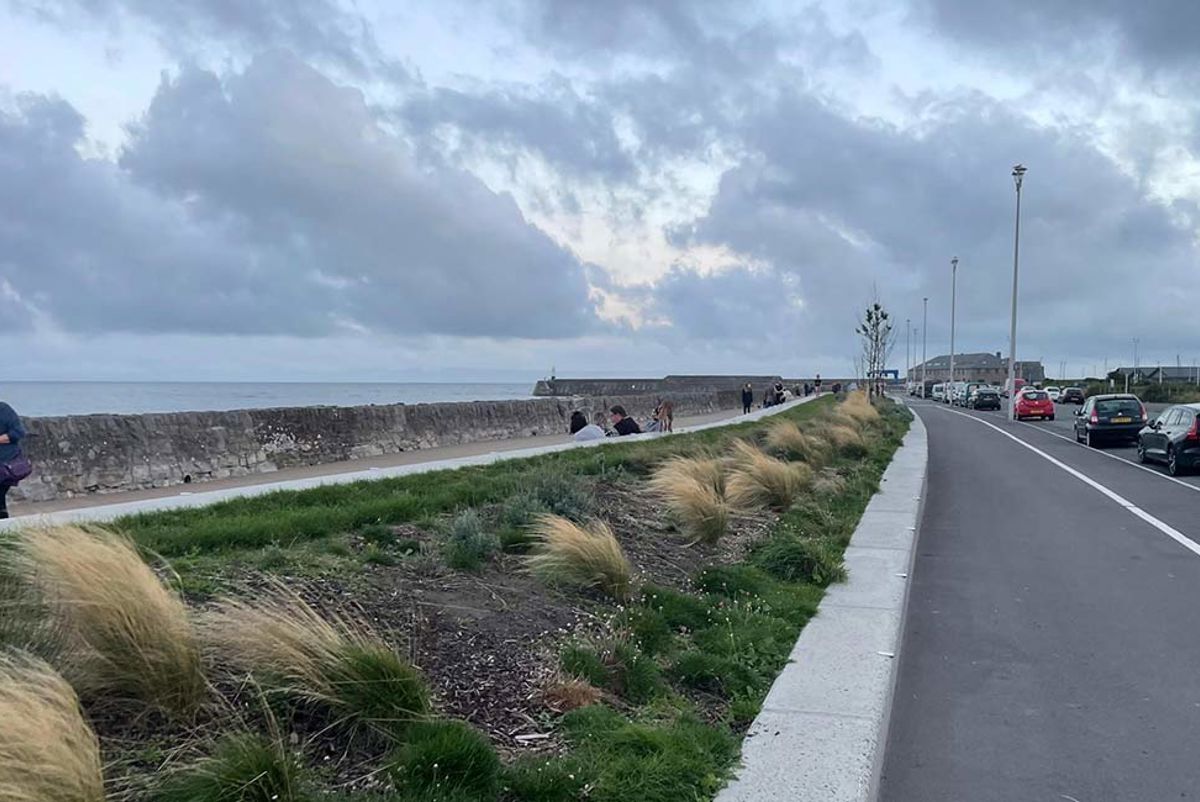
A coastal resilience scheme that delivers more
Correctly framing the problem and using sensitive, risk-based design has been key to success at Sandy Bay. The outcome is a scheme that manages coastal risk; sensitively safeguarding a historic breakwater and restoring sand dune habitat while reinvigorating the seaside promenade. But beyond protecting more than 700 properties from flooding and providing residents and visitors with much needed amenities, the scheme will act as a catalyst to unlock regionally significant strategic regeneration.
Azimuth Land Surveys / Cubex Industries / GGAT / Knights Brown / Steve Hold Consulting/ Swansea University / TerraDat (UK) / WSP
What we delivered
-
An ecological approach to sensitively protect Porthcawl from the impacts of climate change
-
Mass sensor data to build a comprehensive picture of risk to sea defences
-
A low impact, high efficiency approach to flood protection
Get in touch with our team
Projects
Explore more flooding and stormwater management projects
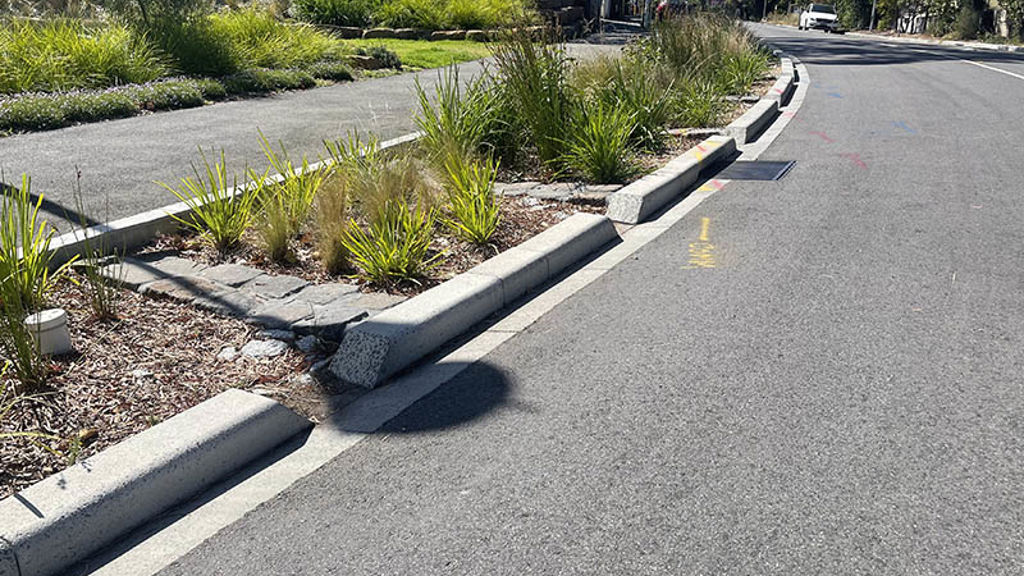
Creating cool and green streets with spatial data
Strategic Prioritisation Map for Water Sensitive Urban Design, Australia
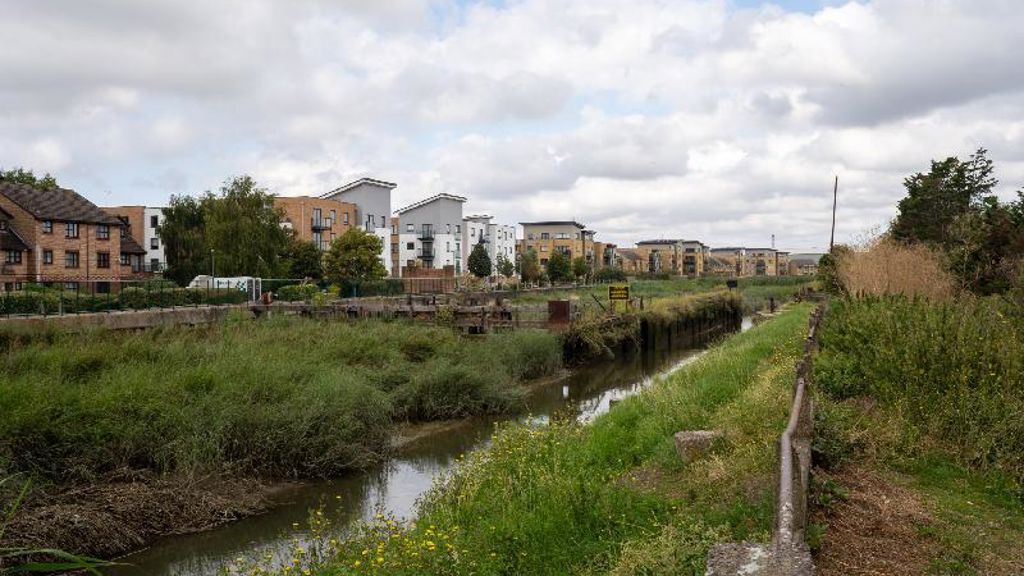
Promoting climate resilient flood defence and development through nature-based solutions
Lower Darent Riverside Strategy, United Kingdom
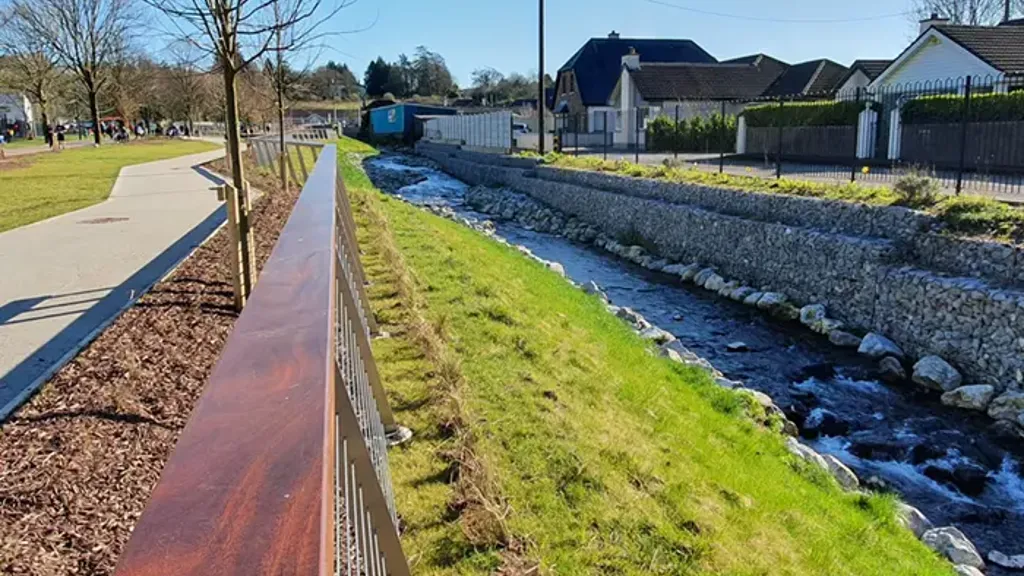
Strengthening flood resilience for communities
Douglas and Togher Flood Relief Scheme, Ireland
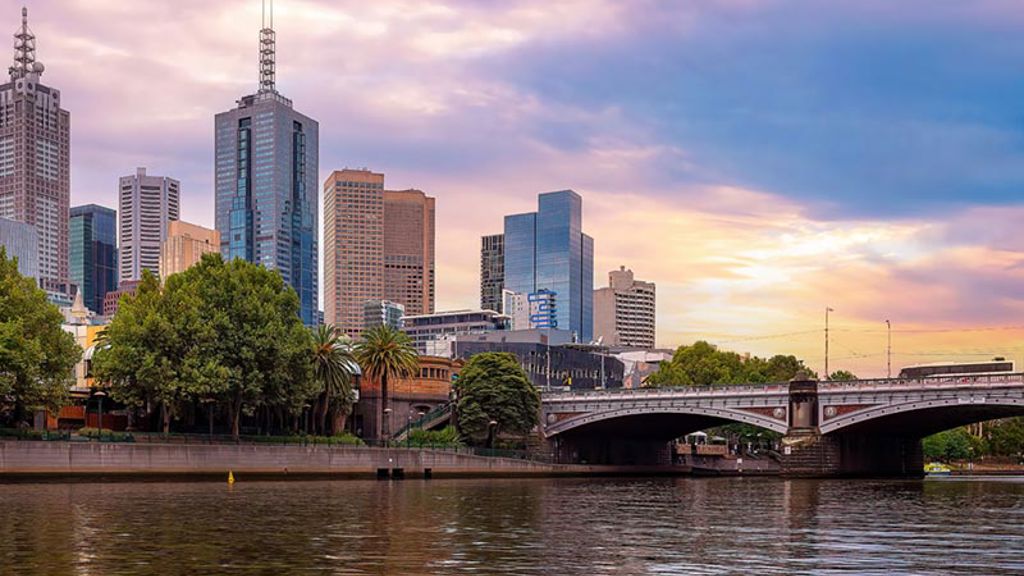
Keeping Victoria’s waterways healthy with optimised stormwater management
Feasibility of stormwater flow regulation, Australia
Get in touch with us
If you'd like to speak to one of our water experts about any of the issues raised on this page or a potential collaboration then please get in touch by completing the form.
